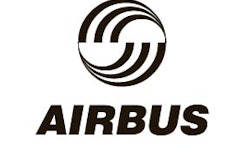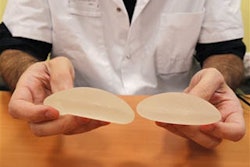This article first appeared in the January/February 2012 issue of Industrial Maintenance & Plant Operation, a Manufacturing.net sister publication.
Originally developed for the American automotive industry, the programmable logic controller has transformed modern day industrial manufacturing.
In the automotive industry, when the production model changed, the control system had to change. This involved hours of tedious work that only highly trained engineers could accomplish. Programmable logic controllers (PLCs) made the constant rewiring of control panels—which could include thousands of hard wired relays, motor driven timers, and rotary sequencers—for every new production model obsolete. Today, manufacturers from every industry have turned to this technology to automate a variety of industrial processes.
The PLC is a generic digital computer that, with programming, can be used to automate almost any electromechanical process. PLCs can be used to control amusement rides, HVAC systems, or assembly lines, and are manufactured to be reliable and withstand harsh environments—making them perfect for industrial manufacturing.
While PLCs are not new technology, their functionality has evolved to include networking, relay control, and advanced data handling capabilities. The first programmable controllers were small, with a limited ability to send and receive signals at a reasonable response speed, which today has been cut down to mere milliseconds. The first PLCs also lacked standardized communication protocols, which made PLC to PLC control difficult. Eventually, PLCs became programmable with personal computer software, and PLC communication became more and more standardized—and widely incorporated into a variety of industrial processes.
“We have PLCs in retail franchises, oil fields, medical applications, HVAC, food, pharmaceutical, metals,” says Gary Marchuk, business development team captain with AutomationDirect. “You name it, a PLC is probably used there.”
AutomationDirect began as PLCDirect, and was originally established to concentrate on the micro PLC market. Since then, AutomationDirect has expanded into a company that today offers over 12,000 products.
“When we formed PLCDirect back in 1994 as the first company to offer PLC products exclusively through a catalog, we did so with a promise of practical products,” Marchuk says. “Our customers continually asked us for more.”
PLCs have grown into an integral part of a variety of manufacturing processes, with capabilities equivalent to those of computers. Today a single PLC is able to handle hundreds of inputs and outputs. They can also be expanded if the base model doesn’t have sufficient I/O. Once programmed, a PLC is triggered by specific stimuli to produce a desired sequence of operations at specified times.
“The challenge is to have the correct hardware to bring specific inputs and outputs to the PLCs,” Marchuk says. “Then to listen to customers to add software functionality that lets the PLC perform the necessary functions for their application.”
PLC design includes coordinating between a PLC’s central processing unit, which controls all PLC activity, and its input/output interface system, which is connected to sensors or switches to provide information. Signals can be sent via voltage or current, with a specific range designated to produce an on or off response, which in turn can control another response. Current inputs are typically less sensitive to electrical noise, like that caused by welding, than voltage inputs. Modern PLCs can communicate via a network to another processor, allowing the divisions of a complicated process to be under individual PLC control, while coordinating over a communication link. A human-machine interface (HMI) allows human manipulation of the PLC.
PLCs have also simplified industrial troubleshooting. With a PLC, a technician is able to hook a laptop to a PLC to find exactly what is malfunctioning. PLC software today has made it easier to investigate specific inputs, outputs, and internal operations such as timers. The status of a running program can also be monitored. For example, a device that should be on (and is driven from a PLC output) can be verified by searching for that output and its status can be monitored to see if the output is on or off. If it is off, a technician can backtrack through the program to determine why.
Like any technology, PLCs continue to grow into improved, more efficient tools for the manufacturing sector. Recent advancements include new I/O modules and enhanced power supplies to better serve specific industries.
“PLCs are still our primary core product,” says Marchuk. “We now have three families of PLCs, two of which have been introduced in the last three years.”
A PLC is a customizable control solution that can be tailored to almost any application, whether it’s dictating the movements of a CNC machine or managing the shutdown response to an emergency stop on a production line.
Marchuk says, “AutomationDirect is continuing to invest in developing new PLC and HMI technologies and also to bring on more products that fill out our automation offering.”
The PLC will remain one of the most important industrial manufacturing automation advances of all time.



















